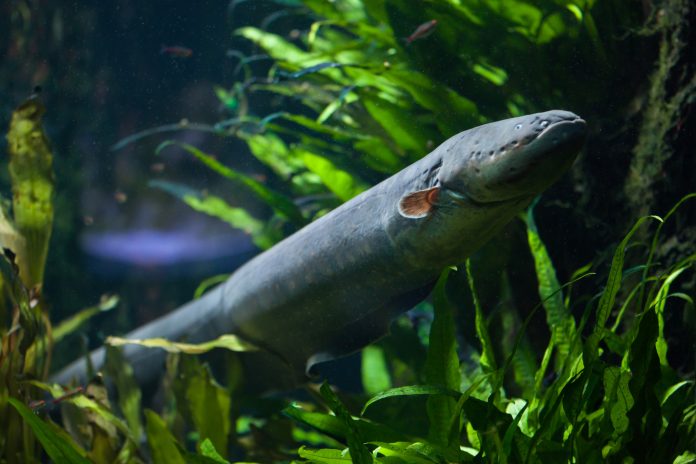Electric eels are renowned for their ability to generate up to 860 volts of electricity, a power potential previously harnessed to run machines
Researchers at Nagoya University in Japan have unveiled a study showcasing the remarkable power of electric eels to induce genetic modification in aquatic organisms.
The study, led by Professor Eiichi Hondo and Assistant Professor Atsuo Iida, challenges conventional ideas of electroporation by demonstrating that these incredible creatures in the Amazon River act as natural power sources, influencing genetic recombination in nearby organisms.
Electrifying nature’s genetic playground
However, the Nagoya University team’s recent findings, published in PeerJ – Life and Environment, shed light on a new frontier: the eels’ capacity to drive genetic modification in the wild.
The research team’s curiosity was sparked by the possibility that the electric field produced by eels could impact the cells of surrounding organisms. Electroporation, a gene delivery technique utilising an electric field to create temporary pores in cell membranes, was the foundation for their investigation.
In their laboratory, the scientists exposed young fish larvae to a DNA solution marked with a fluorescent tracer. This allowed them to observe whether the zebrafish had incorporated the DNA. An electric eel was introduced, prompted to discharge electricity by biting a feeder. The results were astonishing; 5% of the larvae exhibited markers indicative of gene transfer.
Assistant Professor Atsuo Iida expressed his initial scepticism about electroporation occurring in nature, stating, “I thought electroporation might happen in nature.” He added, “Electric eels in the Amazon River could well act as a power source, organisms in the surrounding area could act as recipient cells, and environmental DNA fragments released into the water would become foreign genes, causing genetic recombination in the surrounding organisms due to electric discharge.”
“Electric eels in the Amazon River could well act as a power source,”
Eel-powered gene transfer
The discovery challenges the conventional view of electroporation as a solely laboratory-based process. Iida emphasised the potential impact of genetic modification in nature, envisioning a cascade effect where organisms generating electricity could influence the genetic makeup of their surroundings.
This study aligns with previous observations of naturally occurring electric fields, such as lightning, affecting organisms like nematodes and soil bacteria. Iida is enthusiastic about the broader implications, stating, “I believe that attempts to discover new biological phenomena based on such ‘unexpected’ and ‘outside-the-box’ ideas will enlighten the world about the complexities of living organisms and trigger breakthroughs in the future.”
The study expands our understanding of electroporation and opens avenues for exploring the intricate relationship between electricity and genetic modification in the natural world.
Editor's Recommended Articles
-
Must Read >> The Isle of Man’s approach to sustainable fishing














